


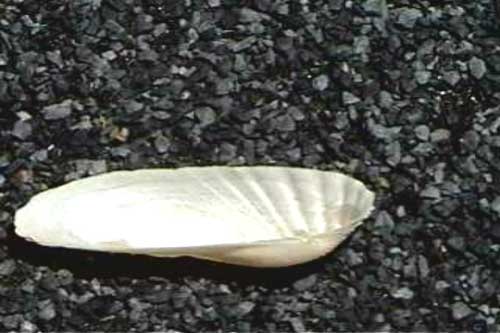
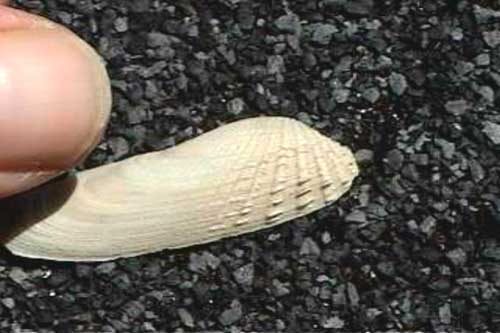
The image most closely resembles False Angelwing (comparing to a photograph in NC Sea Grant's "Seashells of North Carolina".)
Angelwing-Shaped- rupellarias (Petricolidae)
False Angelwing Petricola pholadiformis (Lamarck)
Description: (2 3/4 inches) Thin, elongate shell resembling a small angelwing but lacks the rolled-out hinge area. Beak at one end of shell. Strong radial ribbing on the beak end. Teeth on hinge. Deep pallial sinus.
Color: White exterior and interior.
Habitat: Lives in intertidal zone, burrowed into hard clay or peat. Commonly found on sounds and ocean beaches.
Range: Canada to Uruguay.
Notes: It burrows into hard surfaces and has long, partially united siphons.
Angelwing Cyrtopleura costata (Linnaeus)
Description: (5 3/4 inches) Fairly large, elongate shell tapers to a rounded point. Strongly resembles the wing of an angel. About 30 sharply beaded ribs. Shells rolls outward on top --this edge not braced by partitions. Very thin shell breaks easily.
Color: Pure white exterior and interior, occasionally pink at the edges. Grayish periostracum.
Habitat: Lives offshore and in estuaries, burrowed as much as 3 feet deep in mud or clay. Occasionally washed onto beaches.
Range: New Jersey to Brazil.
Notes: This is a popular shell with delicious meat. The pink tinges occur when the animal feeds on certain types of algae. It moves up and down in its burrows. If dug up, the fragile shell must be placed immediately into a container of water or it will close suddenly and shatter.
Campeche angelwing Pholas campechiensis (Gmelin)
Description: (3 3/4 inches) Resembles the angelwing except it is smaller, with weaker ribbing and numerous braces supporting the rolled-back hinge on its top surface.
Color: White exterior and interior.
Habitat: Lives offshore, burrowed deeply in stiff mud. Occasionally washed onto ocean beaches near and south of Cape Fear.
Range: North Carolina to Uruguay.
Notes: Live specimens rarely are found.
Atlantic mud-piddock Barnea truncata (Say)
Description: (2 1/4 inches) Similar to angelwing but with weaker sculpture. One end squared off and other end pointed. Loose accesory plates above the hinge on live specimens.
Color: White exterior and interior.
Habitat: Lives burrowed into mud, clay or softwood. Occasionally washed onto sounds and ocean beaches.
Range: Maine to Brazil.
Notes: Also called a fallen angelwing. This fragile shell is rarely dug from mud without breaking. It burrows deeply and has long, united siphons.
Source: Seashells of North Carolina, North Carolina Sea Grant College Program
Related Post with images: Fallen Angelwing



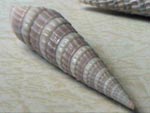

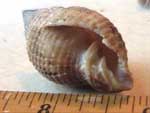





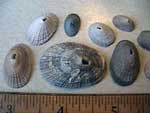

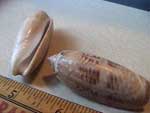
No comments:
Post a Comment